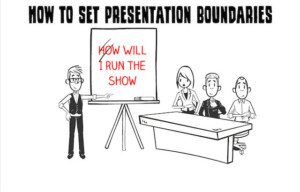Hi everyone,
It was great working with you at the Storytelling Workshop.
Based on your feedback, I created this page to share with you notes and tips compiled from your training.
Feel free to share your questions and comments at the bottom of the page, and I will respond to them here for your reference.
This page is dedicated to your organization: feel free to share it with anybody that can benefit from it.
Peter
List of tips and techniques (Storytelling Training)
1- Everyone has stories and everyone is a storyteller: you just have to train yourself to spot stories from your life
2- Hero’s journey review (A review from last workshop)
The purpose of sharing your story with the audience is to “Relate” to them. You are not trying to get credibility here, but rather build a connection. Remember, people will listen to speakers they connect with.
You can use the hero’s journey to tell your story or the story of your organization.
Full version of the hero’s journey:
- Normal life
- Calling
- New environment
- Mentor
- Challenge/Demon
- Transformation
- Beating the demon
Short version: (use short version for smaller talks)
- New environment
- Challenge
- Transformation: Usually indicated with the phrase: “I decided…” or “I realized…”
Example of hero’s journey short version (from one of my clients):
I was pulled in to work a HIPAA compliance project by my previous employer. I was not happy at first. But I rallied my team and we worked day and night and got the hospital I worked in 80% compliant in only three months. During the process I fell in love with Privacy law, because, “I realized” how important they are to our employees and patients in the hospital. That’s when I decided to dedicate my career to this and now I am the Chief Privacy Officer at XYZ company.
3- Stories affect behavior more than logic, data, or statistics
4- The difference between ordinary storytelling and business storytelling is in the Framing.
Framing is the meaning and lesson behind a story. For an example of framing, look at the last sentence in point # 3 above (the one with the *).
If you don’t “Frame” your story, then people will come up with their frame. To influence people, you need to set the frame for them and not leave the framing to chance.
Her are several ways to frame:
- The lesson of the story is ….
- What we get from this is ….
- The take away is …..
- This tells us…
- This means…
- Etc
5- Where should use stories?
- At the beginning of a presentation: This activates your audience’s right brain, which is more receptive and accepting than the logical left brain. If you want people to be open to your ideas, start them off with the right brain. Otherwise, you have to argue with their stubborn left brain at every turn.
- At every point you want the audience to remember: If you want people to remember a particular point you are sharing, then you will have to use stories to drive the message home.
- At the end of your presentation: I usually end with a story if I want to be inspirational. This is not as important as stories at the beginning of talks or at every important point you make.
6- What turns a “study” into a story
- Anchoring (using the space to explain it: see below)
- Mini personal stories you use in the study
- Framing
- (see Rokia story for an example)
7- Anchoring
Is using the space to move and position content, concepts, ideas, timelines or characters of a story.
See the video of Daniel Pink Below starting at 3 minutes in
8- Build an archive of stories.
Become a collector of stories. Use Evernote (free version is good) to collect them. Trade and borrow stories from colleagues with minor modifications (after all you have the same cause). All you need is 10-15 solid stories that you can use and reuse over and over with different frames and contexts.
Tips and a challenge going forward
- Use at least one story in your next presentation
- Use at least one story in each of your future presentations
- Post one study story here in the comments below (to trade with your colleagues and get my feedback)
- Big Challenge! Start an archive of stories for the whole organization and make it a habit of sharing one new story every week in meetings. This will help everyone in the organization to spread the word in the community and increase your reach and impact (plus this will enrich the life and add even more meaning to everyone working in your organization).
- Share your questions and notes here and let’s do a discussion



